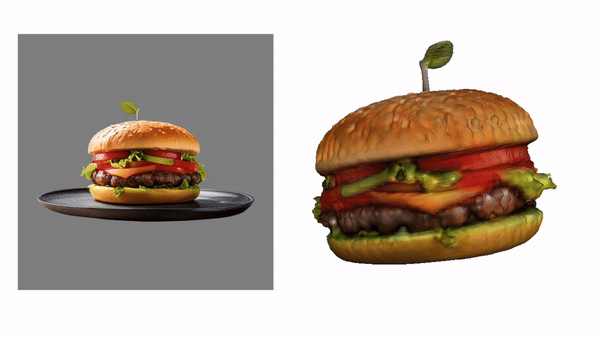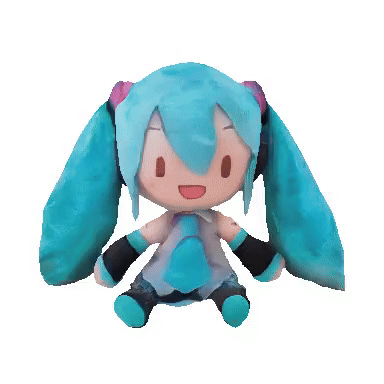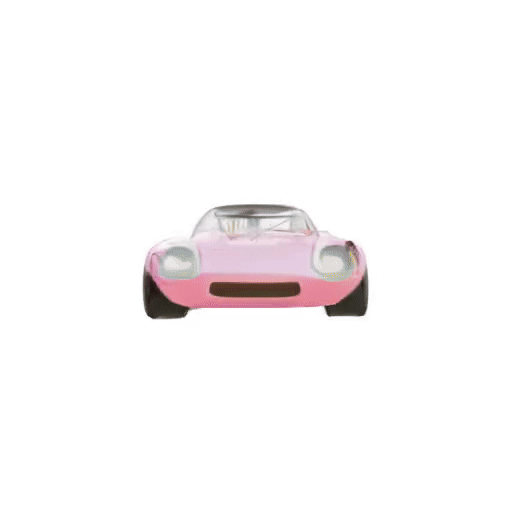tripo-sr
Maintainer: camenduru

4

| Property | Value |
|---|---|
| Run this model | Run on Replicate |
| API spec | View on Replicate |
| Github link | View on Github |
| Paper link | View on Arxiv |
Create account to get full access
Model overview
tripo-sr is an AI model developed by Replicate that enables fast 3D object reconstruction from a single image. It is related to models like InstantMesh, Champ, Arc2Face, GFPGAN, and Real-ESRGAN, which also focus on 3D reconstruction, image synthesis, and enhancement.
Model inputs and outputs
The tripo-sr model takes a single input image, a foreground ratio, and a boolean flag to remove the background. It outputs a reconstructed 3D model in the form of a URI.
Inputs
- Image Path: The input image to reconstruct in 3D
- Foreground Ratio: A value between 0.5 and 1.0 controlling the percentage of the image that is considered foreground
- Do Remove Background: A boolean flag to indicate whether the background should be removed
Outputs
- Output: A URI pointing to the reconstructed 3D model
Capabilities
tripo-sr is capable of generating high-quality 3D reconstructions from a single input image. It can handle a variety of object types and scenes, making it a flexible tool for 3D modeling and content creation.
What can I use it for?
The tripo-sr model could be used for a variety of applications, such as 3D asset generation for video games, virtual reality experiences, or product visualization. Its ability to quickly reconstruct 3D models from 2D images could also be useful for 3D scanning, prototyping, and reverse engineering tasks.
Things to try
Experiment with the foreground ratio and background removal options to see how they impact the quality and usefulness of the reconstructed 3D models. You could also try using tripo-sr in conjunction with other AI models like GFPGAN or Real-ESRGAN to enhance the input images and further improve the 3D reconstruction results.
This summary was produced with help from an AI and may contain inaccuracies - check out the links to read the original source documents!
Related Models

instantmesh

35
InstantMesh is an efficient 3D mesh generation model that can create realistic 3D models from a single input image. Developed by researchers at Tencent ARC, InstantMesh leverages sparse-view large reconstruction models to rapidly generate 3D meshes without requiring multiple input views. This sets it apart from similar models like real-esrgan, instant-id, idm-vton, and face-to-many, which focus on different 3D reconstruction and generation tasks. Model inputs and outputs InstantMesh takes a single input image and generates a 3D mesh model. The model can also optionally export a texture map and video of the generated mesh. Inputs Image Path**: The input image to use for 3D mesh generation Seed**: A random seed value to use for the mesh generation process Remove Background**: A boolean flag to remove the background from the input image Export Texmap**: A boolean flag to export a texture map along with the 3D mesh Export Video**: A boolean flag to export a video of the generated 3D mesh Outputs Array of URIs**: The generated 3D mesh models and optional texture map and video Capabilities InstantMesh can efficiently generate high-quality 3D mesh models from a single input image, without requiring multiple views or a complex reconstruction pipeline. This makes it a powerful tool for rapid 3D content creation in a variety of applications, from game development to product visualization. What can I use it for? The InstantMesh model can be used to quickly create 3D assets for a wide range of applications, such as: Game development: Generate 3D models of characters, environments, and props to use in game engines. Product visualization: Create 3D models of products for e-commerce, marketing, or design purposes. Architectural visualization: Generate 3D models of buildings, landscapes, and interiors for design and planning. Visual effects: Use the generated 3D meshes as a starting point for further modeling, texturing, and animation. The model's efficient and robust reconstruction capabilities make it a valuable tool for anyone working with 3D content, especially in fields that require rapid prototyping or content creation. Things to try One interesting aspect of InstantMesh is its ability to remove the background from the input image and generate a 3D mesh that focuses solely on the subject. This can be a useful feature for creating 3D assets that can be easily composited into different environments or scenes. You could try experimenting with different input images, varying the background removal settings, and observing how the generated 3D meshes change accordingly. Another interesting aspect is the option to export a texture map along with the 3D mesh. This allows you to further customize and refine the appearance of the generated model, using tools like 3D modeling software or game engines. You could try experimenting with different texture mapping settings and see how the final 3D models look with different surface materials and details.
Updated Invalid Date
⛏️
TripoSR

359
TripoSR is a fast and feed-forward 3D generative model developed in collaboration between Stability AI and Tripo AI. It closely follows the LRM network architecture with advancements in data curation and model improvements. Similar models include tripo-sr, SV3D, and StableSR, all of which focus on 3D reconstruction and generation. Model inputs and outputs TripoSR is a feed-forward 3D reconstruction model that takes a single image as input and generates a corresponding 3D object. Inputs Single image Outputs 3D object reconstruction of the input image Capabilities TripoSR demonstrates improved performance in 3D object reconstruction compared to previous models like LRM. By utilizing a carefully curated subset of the Objaverse dataset and enhanced rendering methods, the model is able to better generalize to real-world distributions. What can I use it for? The TripoSR model can be used for 3D object generation applications, such as 3D asset creation for games, visualization, and digital content production. The fast and feed-forward nature of the model makes it suitable for interactive and real-time applications. However, the model should not be used to create content that could be deemed disturbing, distressing, or offensive. Things to try Explore using TripoSR to generate 3D objects from single images of everyday objects, scenes, or even abstract concepts. Experiment with the model's ability to capture fine details and faithfully reconstruct the 3D structure. Additionally, consider integrating TripoSR with other tools or pipelines to enable seamless 3D content creation workflows.
Updated Invalid Date

lgm

3
The lgm model is a Large Multi-View Gaussian Model for High-Resolution 3D Content Creation developed by camenduru. It is similar to other 3D content generation models like ml-mgie, instantmesh, and champ. These models aim to generate high-quality 3D content from text or image prompts. Model inputs and outputs The lgm model takes a text prompt, an input image, and a seed value as inputs. The text prompt is used to guide the generation of the 3D content, while the input image and seed value provide additional control over the output. Inputs Prompt**: A text prompt describing the desired 3D content Input Image**: An optional input image to guide the generation Seed**: An integer value to control the randomness of the output Outputs Output**: An array of URLs pointing to the generated 3D content Capabilities The lgm model can generate high-resolution 3D content from text prompts, with the ability to incorporate input images to guide the generation process. It is capable of producing diverse and detailed 3D models, making it a useful tool for 3D content creation workflows. What can I use it for? The lgm model can be utilized for a variety of 3D content creation tasks, such as generating 3D models for virtual environments, game assets, or architectural visualizations. By leveraging the text-to-3D capabilities of the model, users can quickly and easily create 3D content without the need for extensive 3D modeling expertise. Additionally, the ability to incorporate input images can be useful for tasks like 3D reconstruction or scene generation. Things to try Experiment with different text prompts to see the range of 3D content the lgm model can generate. Try incorporating various input images to guide the generation process and observe how the output changes. Additionally, explore the impact of adjusting the seed value to generate diverse variations of the same 3D content.
Updated Invalid Date

apisr

10
APISR is an AI model developed by Camenduru that generates high-quality super-resolution anime-style images from real-world photos. It is inspired by the "anime production" process, leveraging techniques used in the anime industry to enhance images. APISR can be compared to similar models like animesr, which also focuses on real-world to anime-style super-resolution, and aniportrait-vid2vid, which generates photorealistic animated portraits. Model inputs and outputs APISR takes an input image and generates a high-quality, anime-style super-resolution version of that image. The input can be any real-world photo, and the output is a stylized, upscaled anime-inspired image. Inputs img_path**: The path to the input image file Outputs Output**: A URI pointing to the generated anime-style super-resolution image Capabilities APISR is capable of transforming real-world photos into high-quality, anime-inspired artworks. It can enhance the resolution and visual style of images, making them appear as if they were hand-drawn by anime artists. The model leverages techniques used in the anime production process to achieve this unique aesthetic. What can I use it for? You can use APISR to create anime-style art from your own photos or other real-world images. This can be useful for a variety of applications, such as: Enhancing personal photos with an anime-inspired look Generating custom artwork for social media, websites, or other creative projects Exploring the intersection of real-world and anime-style aesthetics Camenduru, the maintainer of APISR, has a Patreon community where you can learn more about the model and get support for using it. Things to try One interesting thing to try with APISR is experimenting with different types of input images, such as landscapes, portraits, or even abstract art. The model's ability to transform real-world visuals into anime-inspired styles can lead to some unexpected and visually striking results. Additionally, you could try combining APISR with other AI models, like ml-mgie or colorize-line-art, to further enhance the anime-esque qualities of your images.
Updated Invalid Date